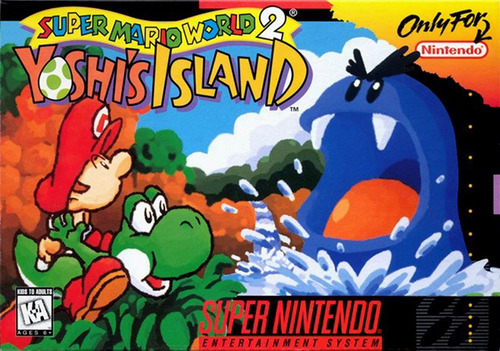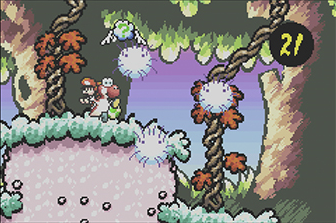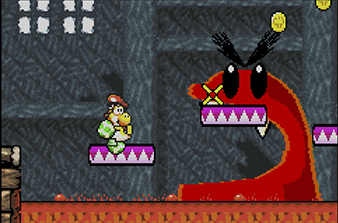This post has not been edited by the GamesBeat staff. Opinions by GamesBeat community writers do not necessarily reflect those of the staff.
With the recent release of Yoshi’s Island on the Wii U’s Virtual Console, I thought I’d take the time to actually play the game, albeit on my 3DS instead. I was born in 1990 and my exposure to the Super Nintendo was limited. I remember playing classics like Super Mario World, Donkey Kong Country and Super Mario Kart, but my tiny toddler brain couldn’t really comprehend what was going on. Consoles like the PlayStation and Nintendo 64 are the start of my most significant gaming memories. I have a lot 16-bit experiences to catch up on, and playing Yoshi’s Island was an attempt to cross one of these off my list. Despite all the praise for the title, I initially found myself underwhelmed.
It’s underplayed in the game’s title, but Yoshi’s Island is a sequel to Super Mario World. The game plays very much like Super Mario World with a focus precise and challenging platforming, but goes well beyond with its presentation by creating essentially a virtual coloring book to explore. However, the early level design plays it safe with a large focus on standard platforming. New mechanics, like throwing eggs, are available to you, but aren’t really used in any significant way in these early levels.
I’ve always been someone who hates more of the same in games and nothing was really pulling me in. I almost gave up on the game during World 3 and started questioning whether I was still interested in trying out 16-bit classic platformers. I just came out of playing Mega Man X a few months ago and I felt a bit lukewarm about that experience as well. What drove me to keep going was that Yoshi’s Island seemed to be laying the groundwork for Super Mario 64’s structure.
Some of the individual rooms have an emphasis on exploration and the developers play with vertical level design. The game doesn’t even have a level timer, which does away with usual “just go right fast” mentality of most platformers. Fully exploring these zones leads to finding red coins and hidden flowers to improve your score at the end of each level. While I didn’t take on the task of finding all these collectibles, it seems that getting all of them in each world unlocks more levels at the end of the game.
Beyond world three, the more open-ended nature of the levels becomes ingrained in the game’s design. What really saved the game for me were the egg throwing mechanics. The eggs just seem like a convenient ranged attack early on, but in the latter half of the game you’re avoiding enemy projectiles while carefully taking aim with your eggs. One of the bosses actually requires you to ricochet an egg off the wall and skip it across the water to hit his weak point. Towards the end of the game you start feeling vulnerable without eggs, which leads to another mechanic where you can re-catch your own eggs to conserve your egg ammunition. In some cases, egg management is essential to completing a level.
In the end I still wasn’t blown away. Maybe my lackluster impressions comes from playing Yoshi’s Island almost two decades after its original release. But, the second half of the game definitely grabbed my attention more than the tried and true gameplay at the beginning.
Please, don’t kill me.



